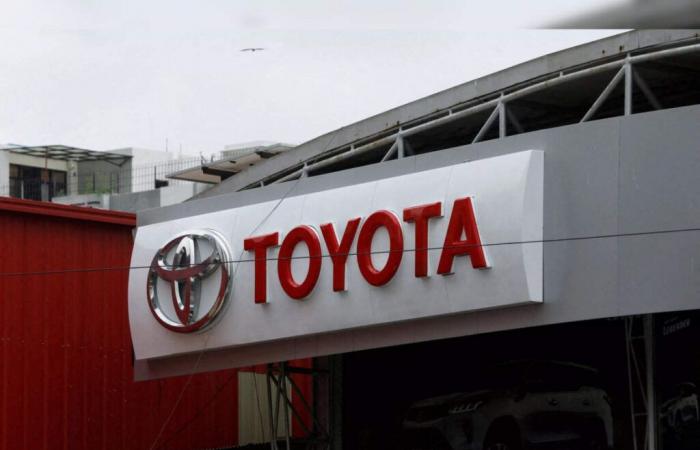Electric car news
Today, Japanese giant Toyota faces unprecedented challenges in the era of electrification. You will discover why the world’s number one automobile manufacturer finds itself in a delicate position, and what this means for the future of the sector.
A historic drop in production for Toyota
For the first time in four years, Toyota saw its global production fall. In the first half of fiscal year 2024, the manufacturer only produced 4.71 million vehiclesa decrease of 7% compared to 5,06 millions of the previous year. This decline is a wake-up call for the company that has long dominated the global automotive market.
In Japan, the situation is even more worrying with a drop in 9.4% of national production. This drop is partly explained by the cessation of production of popular models like the Yaris Cross and Corolla Fielder, following certification problems. Additionally, a recall on the Prius hybrid also contributed to this drop in production.
Electricity, Toyota’s Achilles heel?
If Toyota has long been at the forefront of innovation with its hybrid vehicles, it is clear that the manufacturer has fallen behind in the race for electrification. Despite an increase in 32.5% of electric vehicle salesreaching 78,178 units, these figures remain modest compared to the competition.
Toyota even lowered its production targets for electric cars, going from 1.5 million to 1 million units by 2026. This downward revision of 30% reflects the difficulties encountered by the manufacturer in its transition to electric.
Chinese competition, a growing threat
One of the biggest challenges Toyota faces comes from China. Manufacturers like BYD are quickly gaining market share with very competitively priced electric models. For example, the BYD Seagull, sold for less than 10 000 eurosprances at the top of sales. This fierce competition had a direct impact on Toyota, whose production in China fell by 17%.
But the threat is not limited to the Chinese market. BYD and other Chinese manufacturers are rapidly expanding their international presence:
- In Japan, BYD launched its third electric model, the Seal, in direct competition with the Tesla Model 3.
- The BYD Dolphin, marketed at approximately 24 500 eurospositions itself as a direct competitor to the Toyota Prius and the Nissan LEAF.
- BYD’s Atto 3 electric SUV, sold for less than 20 000 euros in China, arouses astonishment as to its quality-price ratio.
Toyota’s strategy for the future
Faced with these challenges, Toyota is not remaining idle. The manufacturer is banking on the development of new generation batteries to catch up. The LFP “Popularization” batteries, planned for 2027, promise autonomy of more than 600 km according to the WLTP cycle. This advance could allow Toyota to offer more efficient and cheaper electric vehicles.
However, the question arises: will this strategy be sufficient given the lead taken by competitors? BYD, for example, already represents almost a third of LFP batteries installed in China, a market where these batteries constitute 75% of sales.
Lessons for the automotive industry
Toyota’s experience shows us how quickly the automotive landscape is changing. Even the most established giants can find themselves in trouble if they don’t adapt quickly enough to new technologies and consumer expectations. For you, potential buyers, this means that the choice of affordable and efficient electric vehicles will continue to expand in the years to come.
It is clear that the automotive industry is at a turning point. The manufacturers who succeed will be those who know how to combine technological innovation, competitive prices and rapid adaptation to market trends. Toyota, despite its current difficulties, has the resources to bounce back. It remains to be seen whether the Japanese giant will be able to reinvent itself in time to stay in the electrification race.
Written by Albert Lecoq
Specialist in electric car buying guides, I am passionate about new technologies and am a strong supporter of the adoption of electric technology and sustainable mobility.
React to the article







